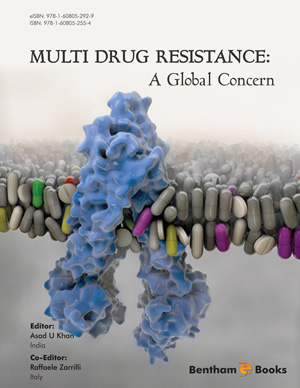Abstract
Klebsiella pneumoniae is one of the most common nosocomial pathogens. K. pneumoniae strains producing Extended-Spectrum β-Lactamase enzymes (ESBLs) with transferable resistance to all β-lactam (except cephamycins and carbapenems) were first detected in the mid-1980s in Western Europe. Nowadays, there is a worldwide and non-uniform spread of K. pneumoniae expressing ESBL phenotype with prevalence as high as 45.4 percent. For infections caused by these strains, treatment with carbapenem drugs has been associated with the best outcomes in terms of survival and bacteriologic clearance. To date, carbapenem-resistance has been unusual in isolates of K. pneumoniae. Nevertheless, several recent studies have well documented the emergence of carbapenem resistance in Enterobacteriacae, including Klebsiella spp., which should be considered of major public concern. Resistance to carbapenems in Enterobacteriaceae is generally caused by hydrolyzing enzymes. The most important among these are carbapenemases, primarily the serine β-lactamase KPC and metallo- β- lactamase VIM. The genes coding for these enzymes are carried by plasmids that often carry other resistance factors as well, resulting in extensively drug-resistant bacteria.Outbreaks of bla (VIM-1) positive carbapenem-resistant K. pneumoniae (CRKP) have been reported from some European countries. In the United States, carbapenem-resistance has been observed in strains of K. pneumoniaeproducing class A carbapenemases, namely, KPC-1, KPC-2 and KPC-3. During 2006, strains of CRKP (KPC-2 and KPC-3) spread through Israeli hospitals and became a major national outbreak. Prior exposure to carbapenem and quinolones was found to be of resistance of K. pneumoniae to carbapenems.Infections due to CRKP have several important implications. First, these infections are spreading worldwide rapidly and are associated with a high estimated attributable mortality. Second, to control the spread of KPC enzymes appears to be difficult. Plasmids are easily transferred and resistant genes can spread within species and even from species to species of Enterobacteriaceae. Finally, and even more worrisome is that most KPC-possessing K. pneumoniae isolates are resistant not only to carbapenems, but also to almost all antibiotics currently in use. The clinical usefulness of a very few drugs showing in vitro activity against these strains remains to be proved.
Keywords: Klebsiella pneumoniae, extended-spectrum β-lactamase enzymes, carbapenem, metallo- β- lactamase, plasmids, enterobacteriacae, serine β-lactamase, class A carbapenemases






















